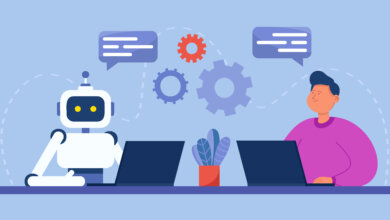
Workdays often slip by in a blur of calls, notes, and shifting deadlines. The hours seem full, but you may still feel like your to-do list is untouched. The problem isn’t always effort, but it’s how your time is shaped. A planner gives you that shape.
In this blog, take a look at why structure matters, what features professionals want in 2026, the different styles of planners, and how the right one can sharpen your focus.
Why Structure Matters in a Busy Workday
The best work planner 2026 can make the difference between racing against the clock and moving through the day with calm control. When your tasks are laid out, you can see what takes priority instead of guessing. That simple act reduces stress because you don’t rely on memory alone.
Planners do more than hold your schedule. They create a clear picture of how your hours flow, so you can spot open time for focused work. Without that structure, small tasks creep in and break your rhythm. With it, you know what deserves your energy first and what can wait.
Key Features Professionals Look For in 2026 Planners
Not all planners are built the same. As work changes, professionals look for features that fit their day-to-day needs:
- Daily Layouts: These give room to map each hour. If your schedule runs tight, this layout helps prevent overlap.
- Weekly Views: Ideal if you manage meetings, team check-ins, and multiple deadlines. You can see the week at a glance and plan accordingly.
- Space for Notes: You often need to write quick thoughts or client details. Extra note space keeps that close at hand.
- Goal-Tracking Pages: If you balance small tasks with long-term projects, these pages help you check progress in a visible way.
Some workers use digital tools, but many still reach for paper. Paper planners cut off constant alerts and let you focus without distraction.
Options That Work for Different Styles
Your work style shapes which planner works best. Here’s how different approaches can guide your choice:
- The Multi-Tasker: If you handle several projects at once, you need an hourly spread. This helps you block time and stay on track.
- The Big-Picture Thinker: Weekly or monthly layouts serve you better. They give a wide view of deadlines, allowing you to plan weeks ahead.
- The Goal-Driven Worker: If you’re focused on milestones, planners with progress trackers and checklists help you stay consistent.
By matching your style with the right layout, you create a smoother workflow. You won’t fight with a format that doesn’t suit you.
Why Design and Size Still Matter
It may sound small, but design plays a part in how often you use your planner. If the pages feel crowded, you might avoid writing in them. A clean layout with clear fonts makes it easy to scan and use daily.
Size is another factor. Some professionals like slim planners that can slip into a bag, while others prefer larger formats that stay on a desk. Durability also counts; if a planner needs to last a year, it should handle daily wear. Even the cover can make a difference: sturdy, appealing designs make it a tool you enjoy keeping close.
Planner Features at a Glance
Here’s a quick look at the types of planners and how they support different needs:
| Planner Type | Best For | Key Benefit |
| Daily Layout | Detail-heavy schedules | Tracks tasks hour by hour |
| Weekly Spread | Meetings & deadlines | Gives a quick weekly snapshot |
| Monthly Overview | Long-term projects | Helps see deadlines ahead |
| Goal-Oriented Layout | Ambitious professionals | Tracks progress & growth |
This comparison shows that no single layout fits all. The right choice depends on how you plan to use your time.
Building a Routine Around Your Planner
A planner only works when it becomes part of your daily rhythm. You can buy the most detailed layout, but if you don’t use it consistently, it won’t add much to your work life. That’s why building a routine matters just as much as picking the right style.
Start small and set aside five minutes in the morning to map out your top priorities for the day. Keep it simple: three to five tasks that need your focus. During the day, check in with your planner whenever you shift from one task to another. That quick glance helps you stay grounded in what matters most.
Evenings are a good time for reflection. Spend another five minutes looking back at what you finished, what you didn’t, and what needs to roll over. This process doesn’t just organize your next day but gives you a clear sense of progress, which can keep motivation high even in stressful weeks.
Over time, this habit turns into muscle memory. Your planner stops feeling like an extra step and starts acting as the backbone of your day. Once that shift happens, you’ll notice how much smoother your workdays feel.
How the Right Planner Boosts Output
A good planner doesn’t just hold your tasks but builds steady habits. When you use it each day, you spend less time figuring out what comes next. That saves mental energy and keeps you moving.
Planners also reduce the weight on your memory. Instead of holding every task in your head, you put it on paper. That clears space for actual work instead of recall. Over time, you also see patterns in how you plan. You might notice tasks that take longer than expected or goals you’re meeting faster than planned. This kind of feedback helps you adjust without guessing.
For many professionals, this rhythm becomes part of their work routine. The act of writing tasks gives a sense of control that no app quite matches.
Conclusion
Choosing the best work planner 2026 is about finding a fit for your style and workload. The right one won’t stretch your day, but it can help you use your hours with more intent. As work continues to change, the need for structure will remain. A planner, simple as it seems, may be one of the few tools that stays reliable in both 2026 and beyond.




